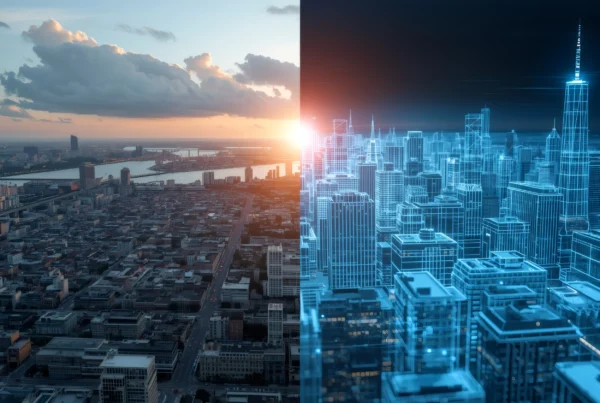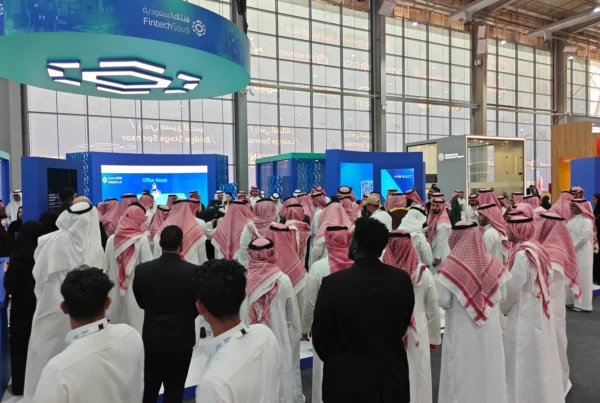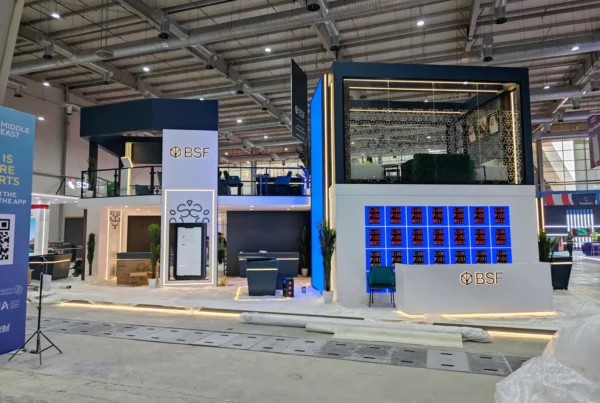When the Riyadh Region Municipality asked us to bring the Riyadh Digital Twin to the Future Projects Forum (FPF), the brief was refreshingly direct: make the existing twin shine in a high-stakes, decision-driven environment. No new features. No re-architecture. Just a fast, reliable, investor-friendly activation that helps project owners, contractors, and financiers see the city’s pipeline clearly and discuss it confidently. If you’re considering digital twins for real estate or planning an immersive booth at your next forum, expo, or board presentation, this is the real-world story of how to do it right.
For readers who want the full case study of the platform we deployed, you can explore the core project page here: Riyadh Digital Twin – A New Dimension in Urban Visualization. In this behind-the-scenes article, we’ll zoom in on the event delivery itself how we tuned the experience for FPF, how our team engineered reliability under live conditions, and how we coached presenters to deliver crisp, two-minute walkthroughs that created momentum in every conversation.
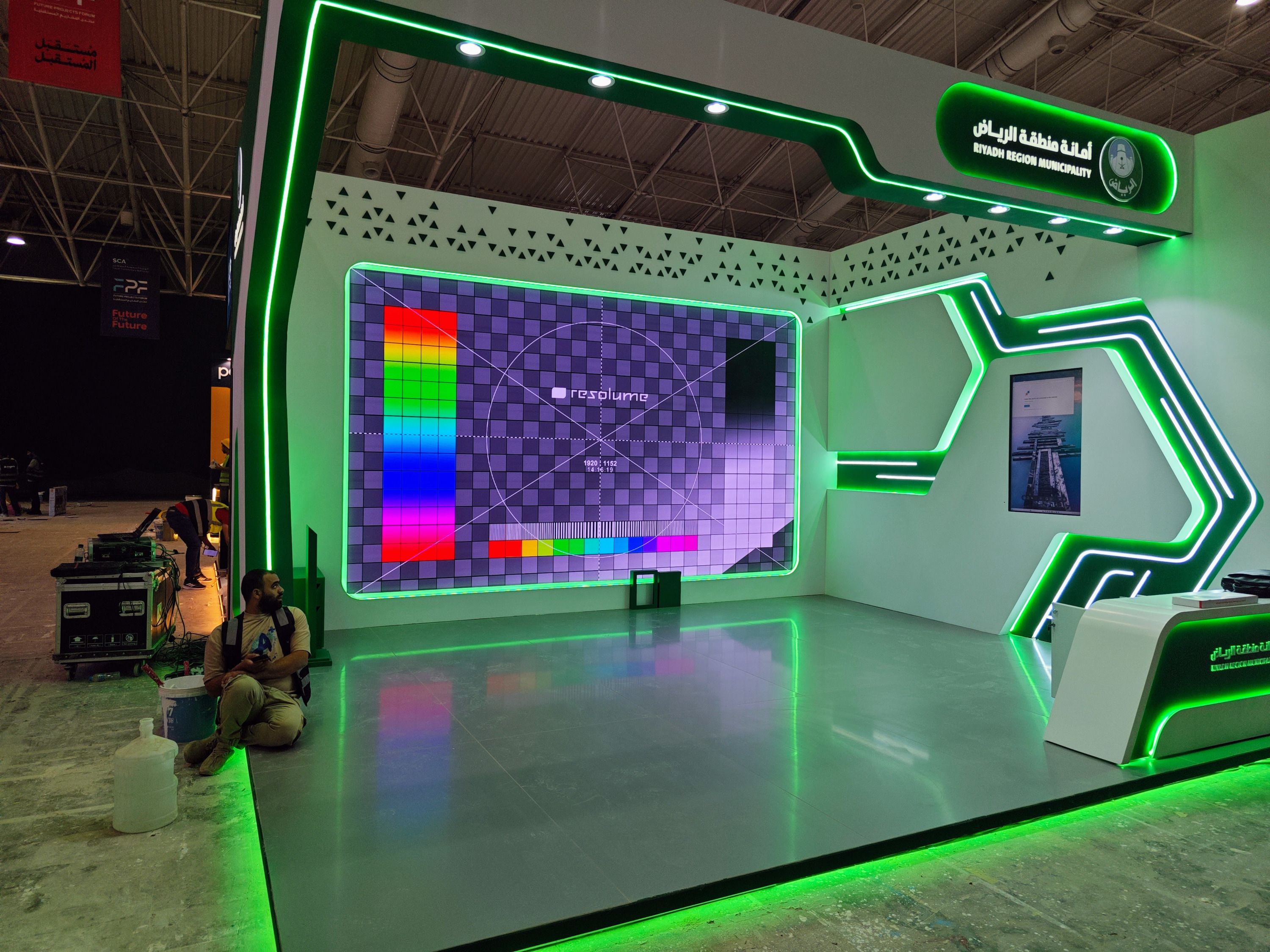
Why a Digital Twin Works at an Investor Forum
Investor forums demand concise, visual clarity: What’s coming next? Where is it? How does it connect to the rest of the city? A digital twin for real estate answers these questions in seconds on a big, camera-friendly screen. Instead of flipping through static slides, you navigate a living city model: zoom to a district, pivot to a corridor, and land on the exact project that matters.
The twin we deployed is an Unreal Engine–based experience, the same platform highlighted in our engineering perspective on engine choice: Digital Twins for Real Estate: Why Unreal Engine Outshines Unity. Unreal’s cinematic visuals and precise camera control are powerful in boardrooms, but they’re especially effective on an expo floor crowded with competing stimuli. The right framing helps stakeholders understand first, then decide faster.
If you’re new to the concept and still asking “what is a digital twin in real estate?”, think of it as a live 3D model connected, navigable, and capable of hosting context like phasing, adjacencies, and district relationships. We dig deeper into this distinction in Digital Twin Buildings vs. Traditional 3D Models: Key Differences and Benefits, but the short version is: a digital twin is a decision tool, not just a pretty render.
For context on the forum itself, FPF is one of the Kingdom’s marquee platforms connecting project owners with the contracting ecosystem. You can learn more on the event’s official site: Future Projects Forum (FPF).
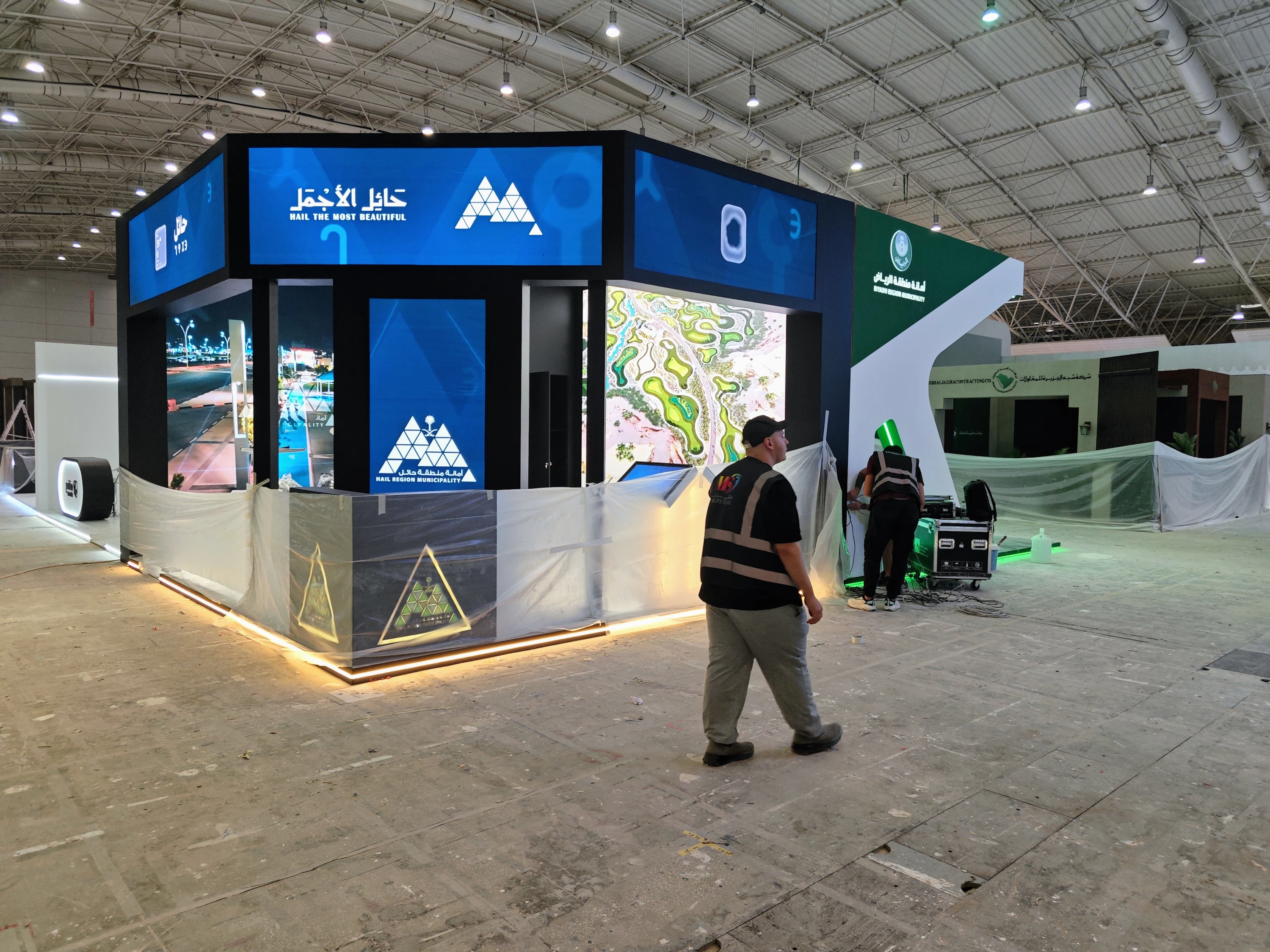
The Real Brief (and Why It Matters)
Let’s be transparent about our role: this activation was primarily about installation, configuration, and on-site maintenance of an existing digital twin. That might sound modest, but in live environments it’s decisive. Elegant technology falls flat if the app stutters, the tablet loses pairing, or the display chain hiccups during a VIP walkthrough. Our responsibility was to eliminate that friction so the municipality’s team could focus on their story not the tech.
From a buyer’s perspective, this is the heart of interactive event technology. At forums like FPF, audience attention is scarce. You need a tool that loads quickly, navigates smoothly, and delivers a crisp narrative in under two minutes. If you’re exploring the event angle, we outline practical planning steps in Interactive Exhibitions for Real Estate Developers: A New Era of Property Showcasing.
Pre-Event: Storyline Mapping for Fast Comprehension
Even when features are fixed, story is malleable. We audited the content and mapped a lightweight narrative structure that presenters could repeat 40+ times a day without fatigue:
-
City-Scale Orientation
Start wide to anchor the conversation. “This is the Riyadh Digital Twin an interactive city model for investment and planning dialogue.” Hold for 5–6 seconds so onlookers absorb the geography. -
District and Corridor Focus
Dive into a named area or corridor where multiple projects live. At this scale, you’re demonstrating context how a project fits the urban fabric. -
Project Spotlight
Stabilize the camera and talk about footprint, adjacency, phasing, or impact. Keep jargon light. You’re establishing credibility without drowning people in detail. -
Back to City Context
Zoom back out to show integration points and interdependencies. This helps frame the “why now?” behind a project conversation.
We trained presenters to deliver this arc in 120 seconds concise enough for the expo pace, rich enough to trigger relevant questions. If you’re mapping similar flows, our team’s field guide Customer Journey Mapping for Experiential Events breaks down how to remove friction from the moment someone approaches the screen to the moment they ask for a meeting.
Display Chain, Controls, and Operator Confidence
An immersive booth lives or dies by the physical chain: media player, control device, signal distribution, and display. Our non-negotiables:
-
Visual Consistency on a Big Screen
We tuned output resolution and frame pacing to the LED wall spec. Trade-show lighting can wash out fine material detail, so we prioritized silhouette and readability over subtle shader effects. -
Low-Friction Tablet Control
Navigating districts and projects had to feel effortless. We configured tablet control with pre-set bookmarks and a minimal UI map, zoom, target, reset. The goal was confident, repeatable movement that looks good on camera. -
Silent Redundancy
We traveled with a hot-swap workstation image and mirrored drives containing all assets. If something failed, recovery time would be measured in minutes, not hours.
For teams exploring remote access, Pixel Streaming is a compelling path to put Unreal content on thin clients or external devices. See Unreal’s documentation hub for an overview: Unreal Engine Documentation. For this on-site forum, however, a local workstation minimized variables and delivered the lowest possible latency.
Unreal Engine: Event-Grade Performance Hygiene
Unreal Engine gives you a powerful canvas. Event life gives you long hours, fluctuating temperatures, and unpredictable lighting. Our event hygiene focused on:
-
Level Streaming & LOD Discipline
High-detail assets streamed only when required. We used LODs that preserved silhouette without overtaxing the GPU. If you want to understand why we default to Unreal for city-scale visuals, the industry overview is a good primer: Unreal Engine for Architecture. -
Material Simplification
We adjusted shader complexity so the scene reads under intense hall lighting and through phone cameras. Camera-legible > lab-perfect. -
Camera Path Sanity
Every preset viewpoint was vetted for user orientation. No clipping geometry, no awkward roll, no “where am I?” moments. -
Input Debounce
We tuned input sensitivity so operators couldn’t accidentally whip the camera. A steady hand reads as confidence; a jittery camera reads as uncertainty. -
Thermal & Power Discipline
Workstations were spec’d for continuous duty cycles. We ran stress tests pre-show and used a small UPS for graceful shutdowns.
If you’re weighing engine choices for digital real estate exhibitions, remember: real-world performance is a mix of frame stability, operator confidence, and camera-readable clarity. Tooling matters, but discipline wins.
Reliability Engineering: The Boring Stuff That Wins Deals
Teams rarely celebrate redundancy, health checks, and content freeze windows, but those layers are what make a demo feel premium. Our routine:
-
Daily Cold Boot to verify startup time, file integrity, and control pairing.
-
Network Health Check for the tablet and local permissions.
-
Content Freeze 24 hours before doors no late asset swaps unless critical.
-
Presenter Mode with minimal UI, an unambiguous splash screen, and a clean “reset to home” button.
-
Shadow Operator stationed near the workstation to support presenters and swap scenes on request.
If you’ve managed large interactive solutions or smart digital signage networks, this will feel familiar. The difference with a digital twin is that the human control surface has to be intentionally small. Fewer buttons. Fewer distractions. More focus.
Scheduling in KSA: Mind the Week
Planning in Saudi Arabia? Logistics make a difference. The standard Saudi working week is Sunday to Thursday, with Friday and Saturday as the weekend. We outline the practical implications for install windows, rehearsal time, and crew rotations in How Saudi Arabia’s Sunday–Thursday Workweek Impacts Global Business Relations. The short version: don’t lose your only rehearsal to a weekend mismatch. Coordinate venue handovers around the local rhythm, and your first VIP tour will feel composed not rushed.
What We’d Recommend If You’re Planning a Similar Activation
If you’re exploring digital twin solutions for events, start here:
-
Fix Your Story First
Define three conversation archetypes investor, contractor, civic. Build bookmarks and phrasing around each. If you want a structured checklist, our service overview Digital Twin Solutions outlines how we scope content for specific audiences. -
Design for Two Minutes
Optimize for a short, repeatable arc. You can always go deeper in Q&A. -
Prune Controls
Fewer buttons equals fewer mistakes. Presenters need stability more than novelty. -
Test on the Real Display
Calibrate brightness, contrast, and color temperature for the venue. A scene that looks rich on a laptop can look flat on a giant LED. -
Backup Like a Paranoid
Mirrored drives, cloned builds, spare cables, and a UPS. You won’t regret it. -
Assume You’ll Be Filmed
Stabilize camera paths. Avoid flicker-prone effects. Frame shots that read well on phones. -
Measure What Matters
Track time to first meaningful interaction, number of demos per hour, and post-demo meetings scheduled. That’s your digital twin ROI in an event context.
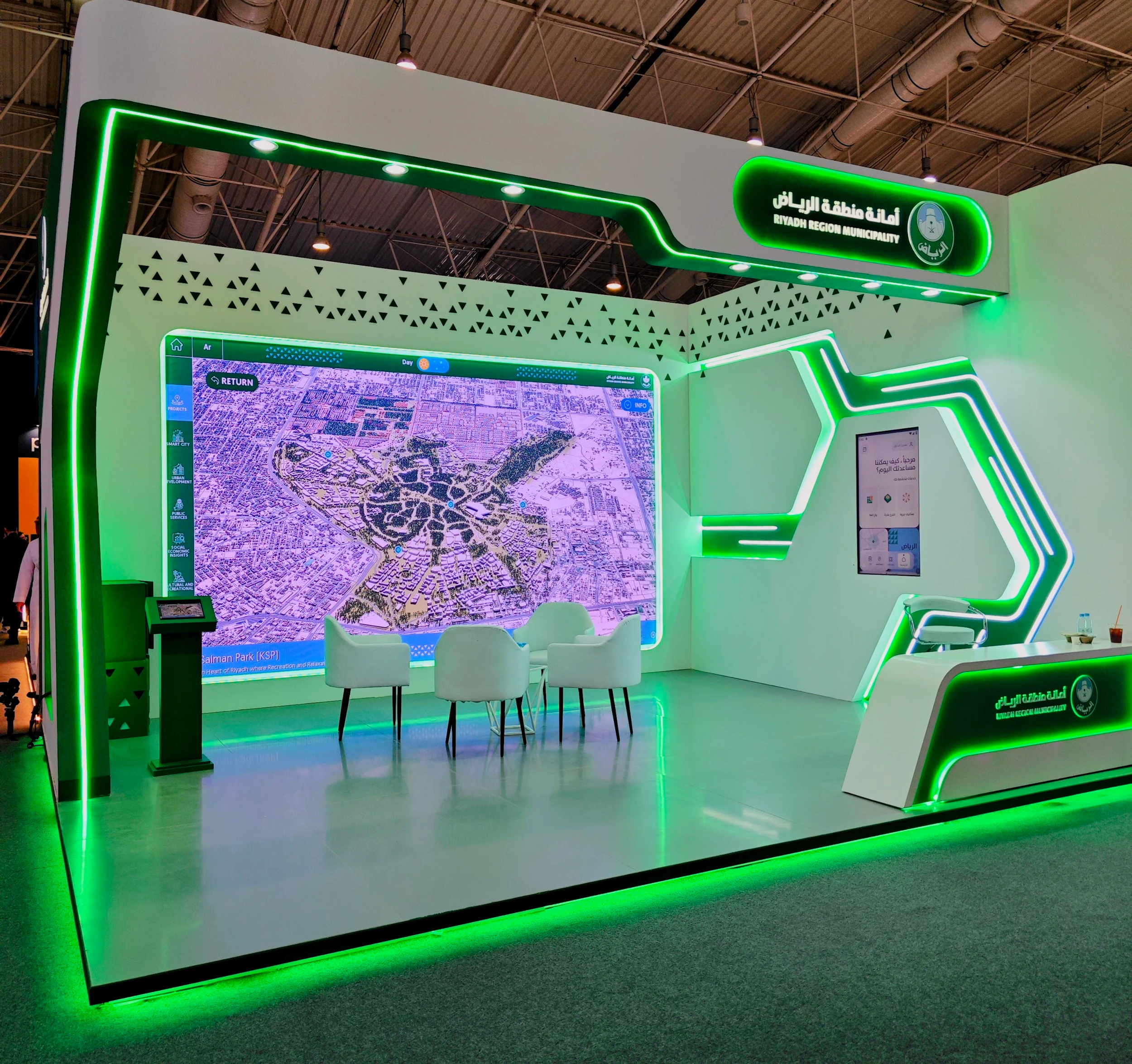
Final Takeaway
A successful digital twin for real estate at an event isn’t about the longest feature list it’s about clarity, pace, and trust. At the Future Projects Forum, the Riyadh Digital Twin proved how a thoughtfully deployed platform can become a powerful catalyst for conversations. When your stakeholders can see the city, find the project, and grasp the narrative in two minutes, you’ve built more than an immersive demo you’ve built momentum.
And if you’re planning your own activation, start by aligning story, display, and operator workflow. The technology will fade into the background where it belongs and your project pipeline will step into the spotlight at exactly the right moment.
Frequently Asked Questions
What is a digital twin in real estate?
It’s a live, interactive 3D representation of a building, district, or city that can integrate data and context to support planning, sales, and operations. At events, it becomes a rapid storytelling tool that aligns stakeholders in minutes. For a practical breakdown, see Digital Twin Buildings vs. Traditional 3D Models.
Why Unreal Engine for real estate?
Unreal delivers cinematic fidelity, smooth navigation, and precise camera control ideal for investor briefings. For a deeper dive into engine choice, read Why Unreal Engine Outshines Unity for Real-Estate Twins, and for industry context see Unreal Engine for Architecture.
Do we need Pixel Streaming for events?
Not always. For on-site forums with stable display chains, a local workstation ensures the lowest latency. Pixel Streaming becomes valuable when you want to distribute the experience to remote devices start with the Unreal Engine Documentation to explore deployment options.
How do we structure the attendee journey?
Design for repeatable, two-minute arcs and remove friction points. Our long-form playbook Customer Journey Mapping for Experiential Events provides a framework you can adapt to your team.
What display setup works best?
Large LED or high-brightness projection with careful color and brightness calibration. Keep frame pacing consistent to avoid visible judder on camera.
Is Friday a working day in Saudi Arabia?
Typically, no. The standard week runs Sunday–Thursday. For planning install windows and rehearsals, see How the Sunday–Thursday Workweek Impacts Global Business.
